Peaches and plums and berries, oh my!
Its summertime and that means one major thing around here…cobbler. From the first bloom of spring right up to harvest time we dream of desserts made with our favorite fruits.
Every house I’ve ever live in has had a berry patch. Not a large mind you, but enough canes to produce enough fruit for summer desserts and extra for canning and freezing so we can enjoy the fresh taste of summer all winter long. They are perfect for the suburban homestead where space may be at a premium. They can be grown on fences, trellises or arbors, making them perfect for a vertical garden because they leave valuable ground for root crops or non-trailing vegetables.
My current berry patch abuts a perimeter fence. It is just 3-foot wide by 30-foot long and has blackberries, raspberries and boysenberries that I train to grow on a 54-inch tall cattle panel. The canes are managed and pruned so we don’t have them rooting all over the place. As they start to push out new growth in the spring I fill one gallon nursery pots with rich compost and nestle the budding new growth down into the soil to root, starting a new batch of canes.
Over the years I’ve helped friends and family start their own berry patches with cuttings from my own. Berry canes are easy to root, grow in many different soil types and best of all…grow like weeds once they get started. It’s one of the best plants for new gardeners, and a favorite of well-seasoned homesteaders.
And, let’s not forget those plump, juicy, flavorful berries that explode in your mouth with a burst of flavor, or make a thick decadent jam, luscious pie or frozen little gems waiting to be blended up into a refreshing smoothie.
But…I have to admit there’s nothing better than a warm fresh berry cobbler warm from the oven. Well—unless it’s a berry cobbler with a big glob of creamy vanilla ice-cream on top. That’s a double yum.
There’s a lot of debate about fruit cobblers and what constitutes a “real” cobbler. There are cobblers topped with fluffy biscuits, some with cake-like toppings and others with a light batter pored over, creating a cobbled effect when it bakes. But, around here cobbler means one thing and one thing only, sweet seasonal fruit encased in a crumbly oatmeal brown sugar topping.
Blackberry Cobbler with Oatmeal Topping
INGREDIENTS
FILLING:
3 cups blackberries
2/3 cup sugar (depending on the sweetness of the fruit)
1 Tbsp. all-purpose flour
TOPPING:
1/3 cup all-purpose flour
½ cup packed brown sugar
¼ cup butter, melted
1 cup rolled oats
¼ Tsp. ground nutmeg
DIRECTIONS for Filling: Put all ingredients into a large saucepan and slowly bring to a boil until the sugar dissolves.
DIRECTIONS for Topping: Put all ingredients into a large mixing bowl. Pour melted butter over and mix with a fork until it is crumbly.
Heat oven to 375. Pour berry mixture into an 8-inch square baking dish. Cover with oatmeal topping. Bake for 30 – 35 minutes or until bubbly. Serve at room temperature with vanilla ice cream.
TIP: My family likes this topping so much that I make a double batch. I put a layer on the bottom and one on the top for an extra crispy yum.
INGREDIENTS:
- FILLING:
- 3 cups blackberries
- 2/3 cup sugar (depending on the sweetness of the fruit)
- 1 Tbsp. all-purpose flour
- TOPPING:
- 1/3 cup all-purpose flour
- ½ cup packed brown sugar
- ¼ cup butter, melted
- 1 cup rolled oats
- ¼ Tsp. ground nutmeg
DIRECTIONS:
- DIRECTIONS for Filling: Put all ingredients into a large saucepan and slowly bring to a boil until the sugar dissolves.
- DIRECTIONS for Topping: Put all ingredients into a large mixing bowl. Pour melted butter over and mix with a fork until it is crumbly.
- Heat oven to 375. Pour berry mixture into an 8-inch square baking dish. Cover with oatmeal topping. Bake for 30 – 35 minutes or until bubbly. Serve at room temperature with vanilla ice cream.
People get into the homesteading life for all kinds of reasons. Some want to be more self-reliant or self-sufficient, while others come to homesteading for political or conservation or environmental reasons. Regardless of how or why homesteading appeals to people, they all seem to have one common denominator—living on less money.
I know as I have gotten older, stuff, toys and material things have taken a back seat to more simple pleasures, fun experiences and building great relationships. As I age I also think more about what my retirement life will look like and how I want to live when I stop working. All these considerations usually send my brain to thoughts of cutting costs or reducing expenses. But, when I sit down to make notes and charts of areas to cut expenses I realize my life is pretty inexpensive as it is. If I look at things more closely I can definitely say that homesteading saves me a lot of money.
Check out these 25 homesteading activities that can save you a ton of money.
1. Composting – creating your own soil from kitchen scrapes, manure, chicken coop bedding, spent veggies, grass clipping and yard trimmings will save on expensive potting soil.
2. Gym Memberships – all the fresh air, sunshine and physical work of a homestead is much better than any gym machine or cycling class.
3. Heating – cutting or gathering firewood to use in a fireplace or wood stove allows you to use your heater less.
4. Growing Herbs – the cost of herbs at the market is ridiculously high for what you get. Grow your own in pots or in the garden and you’ll never buy herbs again.
5. Grow a Vegetable Garden – I once read where growing even a small portion of your produce can save a family over $400 a month on their grocery bill. Start with the veggies you eat most often and expand from there.
6. Healthy Living – when you work outside, get lots of fresh air and sunshine, and eat wholesome homemade meals you get sick less frequent, which means fewer trips to the doctor.
7. Home Cooking – cooking from scratch at home will save you hundreds of dollars over eating out.
8. Seasonal Eating – if you purchase what you don’t grow, buying in-season fruits and veggies will cost less than buying them out-of-season.
9. Forage for Food – check out what grows in your area, whether suburban or rural. You’ll be surprised at what you can harvest from neighborhood fruits trees, wild berry patches and forest mushrooms. Educate yourself first so you know what to harvest and what not to harvest.
10. Supplemental Feeds – spent veggies, kitchen scrapes and trimmings are great for chickens, ducks, geese and rabbits. They get variety in their diet and you use less feed.
11. Lower Cable TV – when you spend a lot of time outside working in the garden, playing with animals or just enjoying the serenity of your homestead, you fall away from watching mindless TV programs. Cutting the cable is the first step to a more enjoyable life, in my opinionJ
12. Free Entertainment – simplifying your life and cutting costs spills over into entertainment as well. Many libraries and museums, even Parks Departments, offer enjoyable free programs like concerts, lectures and movies.
13. Homemade Fire Starters – with a bit of old melted candle wax and a handful of dried leaves, herbs or potpourri you’ll be starting fires for free and cutting out the gas.
14. DIY – homesteader types tend to be lifelong learners, picking up skills that others have to hire out, like plumbing, carpentry or electrical will save you a lot.
15. The Three “R’s” – self-sufficient living promotes reusing, repurposing or recycling items so they don’t end up at the dump. Scrape lumber for nesting boxes or shelves, pallets for fencing or broken down to make rabbit hutches or chicken coops, cast offs crafted into décor items, the skies the limit when you use your imagination.
16. Make Your Own??? – from laundry supplies, health remedies, beauty products and cleaning products, the projects will be fun and save a ton on chemical laden over-the-counter items.
17. Go Second Hand – thrift stores are a great place to find useful items from tools and equipment to clothing and household items. Just don’t go overboard, even a good deal can be a waste of money if you’re buying what you don’t really need.
18. Line Dry – every homestead should have a clothes line. Not only is hanging clothes on a line therapeutic (well, at least to me) it will save on the electric bill. Rig up an indoor line for winter use as well.
19. Clothing Repairs – sewing, knitting, crocheting and darning are common homestead skills people want to learn. It’s also a great way to save on tailoring or repair costs when you can do it yourself.
20. Big Batch Cooking – take advantage of a cold day and make big, or multiple big batches of soups and stews, freezing them for later use.
21. Extend the harvest – if you live in colder areas, you can still harvest fresh produce by building a few cold frames…out of scrape lumber and reused windows of course.
22. Hunt and Fish – these two skills can put pounds of food in the freezer and keep hundreds of dollars in your pocket.
23. Home Dairy – if you have the space and are allowed, consider keeping a dairy goat. The gallons of milk and pounds of cheese and yoghurt will more than offset the cost of feed.
24. Grow a Medicinal Garden – growing medicinal plants and making them into teas and tinctures can help stave off colds and flues, ease sore muscles, relieve headaches and help you fall asleep. It will also save on the cost of drugstore remedies.
25. Wearable Warmth – bundle up in warm wool sweaters or blankets and keep the thermostat low, saving on heating costs during the colder months.
Grab a cool drink and settle in someplace comfy folks, this is gonna be a long one.
I rarely, if ever, write about something I’ve read on another homestead blog, but a recent post about homesteading myths bothered me so much that after days of tossing and turning it around in my mind I had to say something.
First off, I want to say…I don’t know the blogger personally; we have never met, never communicated with each other. I drop by her blog once in a while and am impressed with the life she has carved out for herself and her young family. I’m also not here to defend her; she seems strong enough to do that herself.
So…what’s my beef? People who bash homesteaders because, in their view, we have not gone far enough, have not been authentic enough, have not been purist enough.
Like many most homestead bloggers, we love encouraging people young and old; city dweller or country newbie to find their way in the homesteading world regardless of how that looks. Pursuing a more self-sufficient life in a modern world is a very personal thing. No two lives, or homestead, will look the same. That’s the beauty of the community we are all trying to build. Variety is the spice of life and we can all encourage and support one another with our words, experiences and encouragement.
So, why was I bothered by her recent post?
It wasn’t her…honestly. Let me explain…
…I popped into her blog on the 4th of July weekend, just to see what she was up to. She had posted an article responding to emails she had gotten complaining that she was not a REAL homesteader, that she was not living a true homesteader lifestyle. Like many of us, she sometimes dines out with friends or family, watches movies and eats not-so-homemade meals. In essence the commenter was telling her she was not authentic in her journey as a modern homesteader.
In reality, none of us are living the same life as our homesteading forbearers lived, and I don’t know about you, but I don’t want to. Homesteading in the 1800’s was fraught with injury, disease, starvation, crop failure, bankruptcy and depravation. If you study that era just a bit you’ll see that children died of all kinds of illnesses and it was not uncommon for women to die in child birth.
Is this the kind of authenticity the commenter was referring to? I sincerely hope not.
Comments like this are not unusual for bloggers who open their lives up to the blogosphere. Many of us, me included, have been on the receiving end of less than pleasant comments by people who think we are not doing things right because we are not doing things the way THEY think we should. You have to be pretty thick skinned to lay your life open on the internet, and I have learned over the years to just let these kinds of comments roll off and chalk them up to people who are looking for something I am not providing.
But, this post bothered me…a lot. It was not the bloggers response…that she handled beautifully. It was the idea of what we are all trying to do, what we are trying to accomplish was not good enough, at least not by the commenters standards.
As I went about my day, getting ready for family celebrations, I couldn’t get the post out of my mind.
As I fed the chickens and collected eggs murmurs crept into my mind, “am I not a real homesteader because I don’t have hundreds of chickens?”
When I was making everyone’s favorite baked beans I thought, “am I not a real homesteader because I didn’t grow, harvest, clean, cull, and cook those beans before they were used to create a family favorite?”
And, when I was pulling weeds, in what will be my new kitchen herb garden, watching my crazy little hen fluff herself in a cloud of dust, was I not a homesteader because I didn’t hatch her from an egg fertilized on my land.
I sat in the dirt thinking about that post, wondering how anyone can call themselves anything if they do not do it to the level of an anonymous audience.
Is a person who creates a few quilts a year, not considered a quilter because they don’t produce dozens a year?
Are the members of my church choir, not singers because they don’t sing professionally, have a record label or sing in a famous theater?
Is the painter who puts color to canvass for the joy of it not considered an artist because their works hang in a loving home rather than a gallery?
Are people who journal (or blog) not writers because they have not worked with big publishing houses?
Is the small land owner who sells at the Farmers Market not a farmer?
And, does my 40 years of raising livestock, gardening and pursuing a simpler way of life make me an unknowledgable fake rather than an experienced veteran?
I thought about this commenter’s line of thinking all weekend and into the following weeks. Everywhere I looked I saw signs of people the commenter might take issue with because they were not doing their craft, living their life at a level the commenter would think sufficient.
It wasn’t until a few weeks later, after finishing a full day’s work at my 9 to 5 job, making dinner from scratch, and doing evening chores around my suburban homestead that I finally sat down to relax. A cool breeze was coming in off the ocean, the soft wind pushing the day’s heat out of our valley. I sat on my patio watching my hens cluck and scratch around the yard as they do every evening. Fragments of that post still lingering in my mind. In that quiet, serene moment when I looked around and saw the life I had made, the projects that DD and I had worked on, and the food and animals that we had raised on a small suburban homestead at the edge of town, it came to me, something I was told many years ago, that has stuck with me all this time—hike your own hike.
What the heck does it mean to hike your own hike?
Bear with me while I explain.
It was back in 2011.
DD (aka Showie) was about to age out of two livestock programs that had taken us to fairs and expos and auctions all over California showing and selling sheep and chickens. Showing had been a huge part of our lives for 15 years. Prior to moving to our small lot at the edge of town, my sister and I had raised and shown sheep all over the western US for more than 30 years. DD went to her first ram sale at just 4 months old. Raising livestock was in our blood. It defined us, made us who we had become, and it was all going to stop in a matter of months.
Realizing that I would have a lot more time on my hands, I set out to think about the next phase in my life—the life of an empty nester. I thought about all the things I had not done, places I had not gone because buying, raising and showing livestock had always come first. I began making lists of places, activities, things I wanted to do.
One item on my list was to hike the Pacific Crest Trail, a trail that extends from Baja California to the south, through 3 states, ending at the Washington/Canadian border to the north; 2,650 miles through the California desert, the glacial expanses of the Sierras Nevada mountains; through the deep forests Oregon and over the volcanic peaks of the Cascade Mountain range.
A hiking venture like this is a huge undertaking. People spend years planning and training for this hike, it’s not something to be taken lightly, but was something I wanted to do.
As I researched the trial, spoke with outfitters who advised hikers, and read the trail journals of people who had, and were, hiking the trail, I came to understand what a feat this really was. I also realized that there were parts of the trail I had absolutely zero interest in hiking—the California desert for one. Several hundred miles of searing heat and freezing cold, the desolate surroundings were less than appealing as well. The other areas I had no interest in were the high snowcapped peaks of the Sierras and Cascade mountain ranges; the potential for sliding off a cliff or down the side of a mountain was equally unappealing.
Thinking about these revelations and the kind of hiking I really wanted to do, I set out to create “my own” hike, a condensed version of the original that I could hike in sections over many years. (Hikers refer to this as section hiking rather than thru hiking where you go from one end of the trail to the other in one trip)
A year later sis and I set out on a long weekend for the first leg of our hike, a 20 mile section near Mammoth Lakes. Over the course of two days we hiked past rivers, waterfalls, lakes, ponds, woodlands and jagged rock formations. We saw a variety of birds and wildlife we would have never encountered had we not gotten off the beaten path. It was fantastic, the beginning of a life-long dream, we were hooked.
As we came off the trail, covered in dust, sweat dripping from everywhere, our hair all askew we couldn’t help but feel a sense of accomplishment through the exhaustion. We made our way to the truck and pulled out our cooler. It was late in the afternoon and most of the picnic area was deserted. We set up our lunch at the edge of the trail—homemade chicken salad, fruit, cheese, nuts and a gallon of ice cold water. Food never tasted so good as it did that day. We sat in the shade eating, watching as hiker after hiker come off the trail and greeted us with the same dusty tired smiles we had an hour before.
I felt like part of a group that day, a group of people who were like me, just wanting an adventure, a challenge, and to be out in nature.
We must have sat there for hours when two young, spry men bounded off the trail like they had enough energy to hike another 20 miles. They greeted us, asked how we were doing, what we saw, where we had hiked. One thing led to another and they joined us at our table, pulling out a few bags of their trail food and bottles of water. They were pleasant and chatty, telling us all about their many hiking excursions. These were serious hiker, I thought.
During our conversations I found myself almost apologizing that we had not started our hike at the beginning of the trail. I made excuses about why we weren’t hiking the entire trail, that we had selected only certain sections. And, it must have seemed like I was asking permission to hike the trail over the course of years instead of the normal 5-months. When I realized what I was doing I felt almost sick. I didn’t need their permission or approval to hike where I wanted or to by-pass the areas I wasn’t interested in. Why was I rationalizing any of this to a perfect stranger!!!???
The guys were sweet and must have sensed that what I was really saying was…I. Am. Not. A. Real. Hiker.
We continued talking. They told us where they had hiked and where they were hiking on this trip. They told us about their lives and plans and how much they loved to hit the trails almost every weekend. Sitting there listening to these two young men I felt even more like a fraud. I hiked local trails; they hiked major sections of the US. Even though I had a wonderful hike, felt very proud of my accomplishment and was looking forward to our next trek onto the trails, I also felt slightly diminished, like what I had done was nothing compared to what these two young men had done, were doing.
I sat silently listening to them talk. I was in awe of what they were doing. I wondered why I waited so long. I felt like I had missed out on so much, wasted so much time not starting earlier in my life. I gazed off into the distance, their voices fading to a murmur, reflecting on what the hell I was doing. I was mid-life, I had a grown daughter, and I had not trained to hike a trail like this.
When the sun sank below the treetops and the air turned chilly, sis and I were ready for a long hot bath, a warm meal and a soft bed. We were spent. The young men decided to continue their hike to the next point on their map. I wished them well and safe trails. They hugged us and told us how awesome it was that we were out here doing our own thing. As they walked towards the trail, one of the young men turned back towards us and said something I will never, ever forget.
He said, “We all hike our own hike. Just because we do it differently than anyone else doesn’t make us any less of a hiker”. I smiled and thanked him, but what I really wanted to do was run up and hug him again because in those four words, a person who had hiked hundreds of miles in dozens of places around the country had just affirmed that I WAS A REAL HIKER TOO!!!
Why the long story?
Just this…
…homesteading, like hiking, is a personal decision, a personal challenge. We decide what and how we want our homesteading journey to look. Mine may not look like yours or the blogger in my story, but it’s not supposed to. We all have different interests we want to pursue, different skills we want to learn, different goals we want to reach.
No one homesteading venture is better than another, they all have meaning and value to the person who matters most—YOU!!
Throw off the shackles of convention, folks. Ignore what people think you should do or how you should do it.
In essence…HIKE YOUR OWN HIKE, folks, but always on your own terms.
We are being overrun!
No—really. I’m not joking.
With all the cool evenings and warm days my mint patch has literally exploded.
I thought I was being clever when I potted up a few of my favorite kinds of mint (spearmint, peppermint and some plain old garden mint someone gifted to me) to control its invasive growing habit, rather than plant it directly in the garden.
Seems I wasn’t so clever after all. Those aggressive little…I won’t say it…grew right through the hole in the pots and PLANTED themselves in my flowerbed. NOW, I have a forest of mint! Yikes.
I know what you’re thinking…
…we complain when a plant doesn’t produce and now I’m complaining when it produces too much.
Mint is one of those plants that grow extremely well regardless of the conditions, so controlling the chaos is a bit of a challenge.
With way too much on my hands I set out to find a few awesome ways to use and preserve my little radical greens. Here are a few:
1. Make mint lemon water – add a few sprigs of mint and several slices of lemon to a cold jug of water. It will keep you cool and refreshed no matter how hot the day.
2. Add it to iced tea or lemonade – for a twist on a summer classic.
3. Use as a room freshener – cut a few sprigs and place in a decorative vase or Mason jar.
4. Keep the bugs out – mint attracts “good” bugs and repels “bad” bugs, so plant up a few pots of Penny Royal mint and place them near doorways to repel ants and flies. I said POTTED, right?
5. Breathe freshener – who needs mint gum when you can just pluck and chew on a mint leaf?
6. Pair with fruit or veggies – mint gives a light fresh taste to veggies like tomatoes, peas, cucumbers, potatoes and beets. Or, mince and sprinkle on a bowl of strawberries.
7. Mojitos – this is a no-brainer. Who wouldn’t love an ice cold glass of lime juice, sugar, club soda, and rum, with a spring of mint, of course.
8. Tame an upset tummy – place a few peppermint leaves in a cup and pour hot water over. Let cool slightly and drink warm to calm things down.
9. Mint Pesto – whip up a batch of mint pesto to use on homegrown lamb kabobs or grilled chops.
10. Create a relaxing bath – pour 1 cup baking soda, 1 cup Epsom salts and ¼ cup of mint leaves in your bath for a relaxing, muscle easing soak.
11. Make fleas flee – pets can be bothered by fleas in summer, so bundle up 2 parts fresh spearmint, 1 part fresh thyme and 1 part fresh wormwood, and tuck it inside a small pillow, placed near your pet’s bed or another favorite resting place.
12. I SAVED THE BEST FOR LAST!!
Minted Lemon Slushy
INGREDIENTS:
- 1 cup fresh squeezed lemon juice (4-6 lemons)
- ½ cup honey
- 3 cups water, divided
- 1 generous handful mint leaves, remove from stems
DIRECTIONS:
- Juice lemons and remove any seeds. In a small pan, slowly heat lemon juice, honey and ½ cup of water. Stir until the honey dissolves. When mixture begins to simmer, remove from heat, and toss in mint leaves. Let steep for 10-minutes. Strain out leaves and add remaining water. Pour liquid into ice cube trays and freeze.
- When ready to serve, put minted lemon ice cubes into a blender and blend. Slowly add water until it reaches the slushy consistency you want (about a cup). Serve immediately with a sprig of mint.
Need a little more color in your life? Try juicing “Pink Lemonade” lemons for a fun summertime twist.
Want a more decadent version? Add a ½ cup of gin to the blender and add water only if you need to.
INGREDIENTS:
- 1 cup fresh squeezed lemon juice (4-6 lemons)
- ½ cup honey
- 3 cups water, divided
- 1 generous handful mint leaves, remove from stems
DIRECTIONS:
- 1. Juice lemons and remove any seeds. In a small pan, slowly heat lemon juice, honey and ½ cup of water. Stir until the honey dissolves. When mixture begins to simmer, remove from heat, and toss in mint leaves. Let steep for 10-minutes. Strain out leaves and add remaining water. Pour liquid into ice cube trays and freeze.
- 2. When ready to serve, put minted lemon ice cubes into a blender and blend. Slowly add water until it reaches the slushy consistency you want (about a cup). Serve immediately with a sprig of mint.
Cutting boards are in use almost daily at my house. I have different kinds that I use for different purposes. There’s polyethylene for chopping vegetables or slicing cheese, and wood and bamboo for carving meat. They are hardworking pieces of equipment in my farm kitchen.
Over the years I’ve owned many sizes and kinds of cutting boards, but none of them really lasted that long. They would discolor, become riddled with bacteria or just plain crack. Then I discovered I was not taking care of them properly.
Yes, there is a right and a wrong way to care for your cutting boards!
Who knew!
Proper care will help them last a long time, while not taking care of them will shorten their useful life, causing you to replace them long before you should have to.
Following these 7 simple tips will help you extend the life of any cutting board.
1. Avoid letting your wooden cutting board to become too dry. Super dry cutting boards can crack and break.
2. Don’t soak your cutting board or let it sit wet. Dampness can swell the wood and weaken boards that are made of multiple pieces. And, never put a wooden board in the dishwasher, that’s just a bad thing all around.
3. Wash and dry boards immediately after each use, especially when cutting meat, fish or poultry, so bacteria doesn’t have a chance to seep into the cut marks. Use warm soapy water, work it into a lather so it gets into all the crevasses, then rinse well and allow to air dry before putting it away.
4. Use the entire surface of the board for cutting, move around the board. Cutting in one spot can cause the board to wear unevenly.
5. Use both sides of the board so both work surfaces are used, evening out the wear.
6. Never use a razor-edged cleaver, it can chip or splinter the board, creating spaces for bacteria to take hold.
7. Season your wooden cutting boards periodically to keep them in good, usable condition, and from absorbing colors and odors from the foods you’re cutting.
How the heck do you season a cutting board?
It’s pretty easy and straight forward. Since I’m not a professional chef, that uses cutting boards all day long, I can get away with seasoning mine 2 or 3 times a year.
To start with, get yourself some food-safe mineral oil. I got mine at Wal-Mart. Then find yourself a clean soft cloth that can be dedicated to seasoning your boards. I bought a new flat cotton weave dish towel just for this purpose and store it on a lidded container.
Now—to season…
…pour on what looks like too much oil, and then rub it into the board using your cloth. Your board may look like it has a thick oil slick on it, but let it rest for about 5-minutes so the oil can soak in. You’ll be surprised at how fast a thirsty board will soak up the oil! I know I was.
Once you have oiled the top of all your cutting boards let them rest for several hours or overnight to the oil really soak in. You may need to reapply another layer if your board seems especially dry.
Now you can oil the other side (remember, you’ll be using both sides to even out the wear). When both sides are well-oiled you can stand them on one edge and let them air dry. I like to use a plate or platter rack for this part.
After your boards have been well seasoned, you can come up with your own schedule. I re-season mine in December, after the holidays and again in June, before the busy BBQ season begins.
To tell if your boards need to be freshened up, simply dribble a few drops of water onto the board. If it “beads” it is fine. If not, it’s time to re-season.
Keeping up a routine means you and your cutting boards will be well-oiled partners in the kitchen. How cool would that be? A kitchen partner!
With the right seasoning and care, a wooden cutting board can last for years, and may even become a family heirloom.
Cleaning toilets is my least favorite household chore!
In reality…cleaning house is not my favorite thing at all. I’d much rather be in the barn or in the garden.
There, I said it. I’m not a great housekeeper!
But, living on a farm, even a suburban one, requires proper sanitation because of all the muck and mire we farm girls track in, so a clean bathroom is more than just a nicety. It’s a necessity.
Over the years I have tried to reduce the amount of chemicals in my home and use more natural cleaners. I have already made the switch to homemade laundry detergent, glass cleaner, dish soap and many others, but a toilet bowl cleaner has been pretty elusive—until now.
I have never used those stinky tables that hang in the tank and turn the water blue. I hate the smell of them, really! But, I still want my bowl to be fresh and clean. So—what’s the solution?
Homemade toilet tables!!
Honestly.
These tiny little tablets are made of baking soda and citric acid with a bit of water to hold the whole thing together and some essential oil to make it smell nice. They are powerful little things that keep the bowl sparkling with very little effort.
I’m in!
They are so easy to use…simply give your toilet an initial scrub (which may take some elbow grease the first time), drop in a tablet and watch it fizz and bubble. After about 20 minutes it should be dissolved (if not give it a few more minutes), then give the bowl a quick swish with your brush. Now you have a wonderful smelling bowl and bathroom that any farm girl can be proud of. Here’s a tip: change the essential oils you use to match the seasons—lavender or citrus for spring and summer, cinnamon for fall, or pine to chase away those winter time blues.
Ready to make your own natural toilet tablets? Here’s how…
Natural Toilet Table Recipe
Ingredients
1 cup Baking Soda
1/3 cup Citric Acid
30-40 drops Essential Oil (your choice)
Spray bottle of water (to moisten)
Directions
1. Combine baking soda and citric acid in a glass bowl, mix well.
2. Add essential oil and mix vigorously with a fork. The mixture will be very dry.
3. Spritz the mixture with water, while mixing and fluffing it with a fork.
4. When the mixture starts to clump slightly, test it. If you can take a small amount and form a ball, you’re done. If it doesn’t, spritz, mix and retest. Be careful, though, if you add too much water the mix will begin to fizz, and you want that to happen in the bowl.
5. Now you can form your tablets. Either take a spoonful and form it into single use sizes on a cutting board, or use a 24-cube silicone ice cube tray and fill each square, packing down the mixture. That size is perfect for one batch.
6. Let your tray dry overnight. To release the tablets, turn the try upside down and tap it gently. Store tablets in an airtight container. Although I’m a nut for Mason jars, I don’t really like glass jars in the bathroom so I use a plastic lidded container for storage.
On cleaning day, drop tablet into the bowl, let it bubble and fizz until dissolved, and wait for about 20 minutes so it can do its thing. Give the bowl a quick swish with your toilet brush and you are done.
Need a few ideas on which essential oils to use?
Here are 10 of the best essential oils for homemade cleaning products…
Tea Tree Oil – antimicrobial, antiseptic, and disinfecting
Lemon – antiviral and antibacterial
Rosemary – antibacterial and antiseptic
Wild Orange – cuts grease
Lavender – naturally antibacterial
Eucalyptus – a natural germicide
Peppermint – antibacterial
Cinnamon – antibacterial and antiseptic
Pine – it just smells great
Thyme – a powerhouse against germs


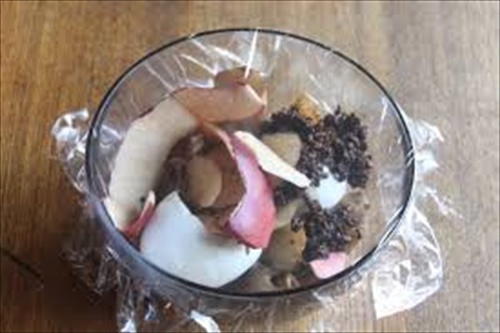
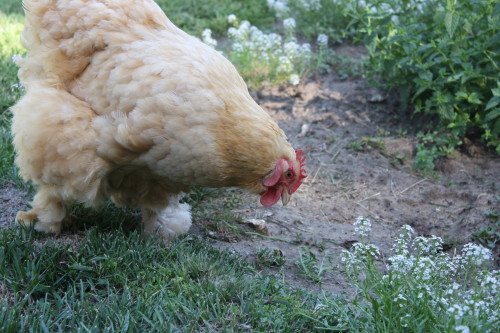

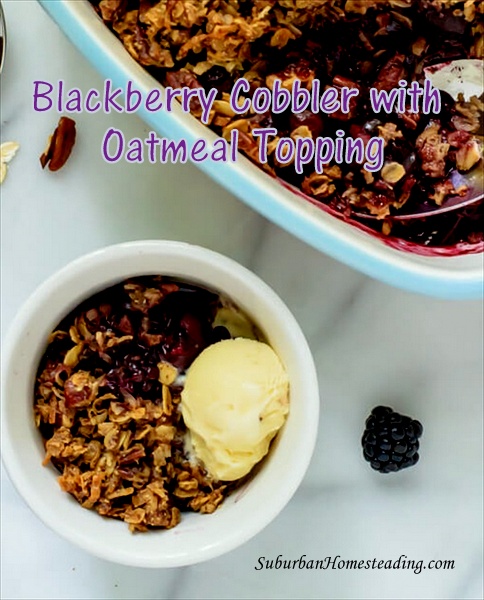

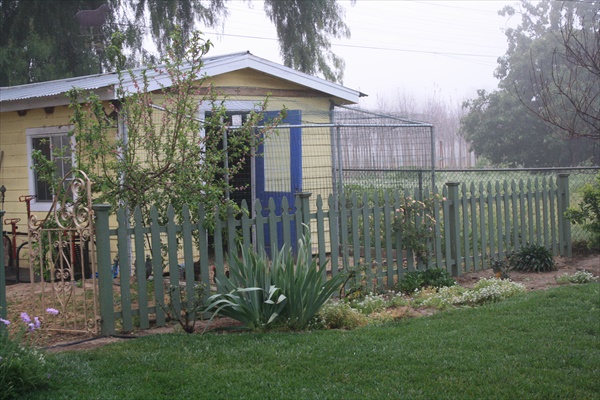
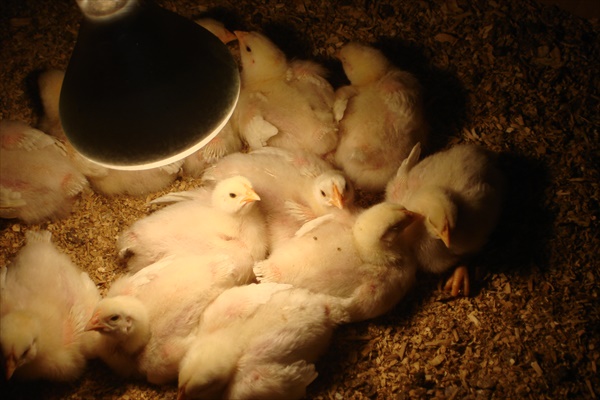
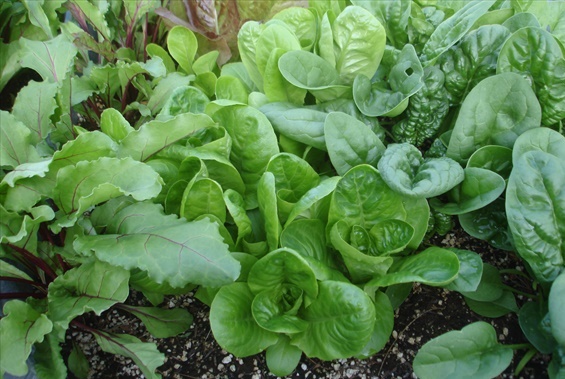


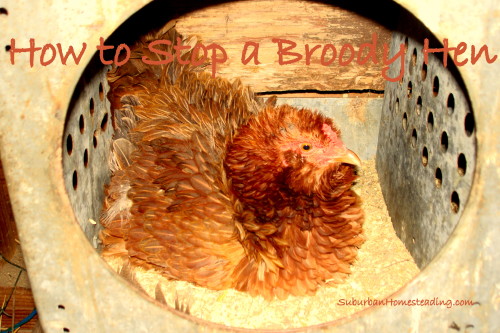

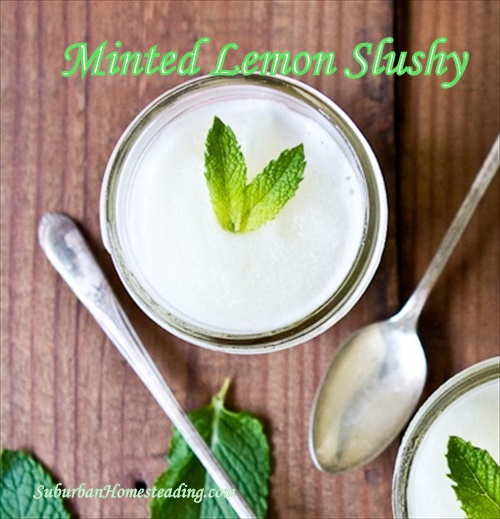
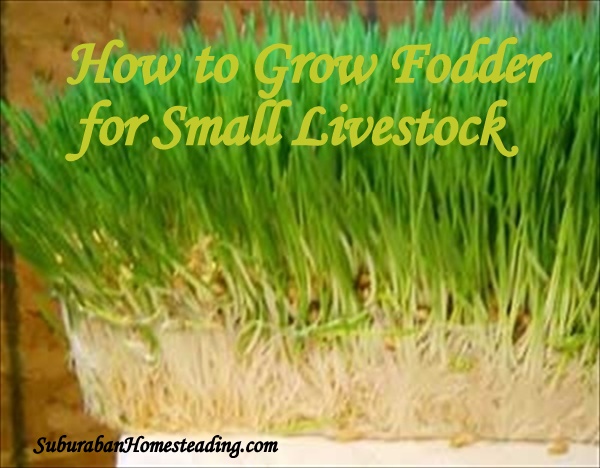
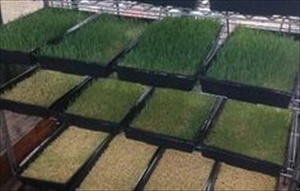
Recent comments
Aenean nonummy hendrerit mauris. Phasellus porta.